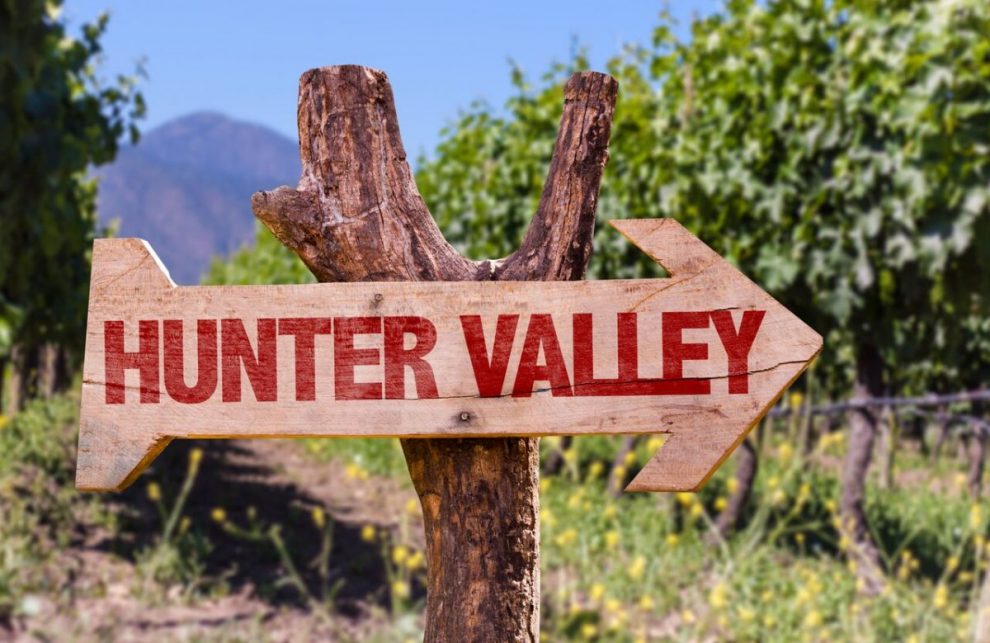It’s not all wine in the Hunter Valley, it’s still at the heart of it all – that will always be so, but it’s what’s happening on its culinary and creative fringes that makes returning here again and again so rewarding and begs the question: “What’s next”? And the answer? Plenty as Barry Stone discovered.
The New South Wales’ Hunter Valley has a history of viticulture dating back to the early 1830’s when over 400 varieties of cuttings were brought here from France and Spain. Vines from the 1860’s are still spreading, and are some of the oldest continuously producing vines in the world. And when you have some of the world’s oldest vine stocks, that makes for plenty of scope for old ways to become entrenched; to focus only on the ‘old’ and ignore the ‘new’. If you’ve never visited the Hunter before, you can be forgiven for thinking it’s going to be wine, wine, wine, and not a whole lot else – you’d be oh-so wrong.
If you’ve never visited the Hunter before, you can be forgiven for thinking it’s going to be wine, wine, wine, and not a whole lot else. But you’d be oh-so wrong.
Now there are Segway tours, an imaginative new breed of chocolatiers, boutique brewers and smelly cheeses. I only wish I’d realised my options a little earlier. Instead of a weekend, I’d have stayed there a week. What might have once been crammed into just two days, can be crammed no longer. This place isn’t a mere “weekend getaway” anymore. It’s a destination.
A segway tour with Eastcoast Xperiences will do away with any fears you might have about these two-wheeled marvels that might look unstable but are anything but. Super-sensitive micro-processors and tilt sensors not only give you a stable ride, but help open up new Hunter Valley vistas. Departing from their purpose-built “Adventure Shed” you travel along bush tracks and through a section of McGuigan shiraz vines, all the while paralleling an old 1880’s stock route on a 5.5 km loop that’s great from all ages from 11 and up. In a word, the segway tour was a “blast”.
Across the road from Eastcoast Xperiences, Binnorie Dairy sits at the heart of the Pokolbin vineyard district and uses local milk to produce a range of delicious award-winning soft cheeses that reflect the flavours and textures of the valley every bit as much as a glass of Semillon.
Alongside Binnorie, Thomas Wines does what few other winemakers here dare, specialising in just two varieties of the grape – Semillon and Shiraz, the valley’s best known wines. Andrew Thomas has won the Hunter’s Winemaker of the Year Awards twice in the last ten years, an unmatched feat, and their four premium Semillons are as distinct as the soils they’re grown in.
One of the really fun aspects of the Hunter is you get to meet the people who make it what it is, the people behind the labels. People like David Hook of David Hook Wines, happily serving customers at his tasting room at Peppers Creek and whose ultimate goal is to leave his Old Vines Semillon and hand-picked vintage grapes to others and follow his father into retirement. “And where’s that?” I asked. “The verandah’, he said, as he autographed me a bottle of his 2016 Mosto.
The food in the valley, as always, was exceptional and refreshingly casual, with shawls available for outside if it’s chilly and always the table service as sparkling as a glass of Chardonnay Pinot Noir. At Margan Estate’s restaurant, awarded a One Chef Hat by the Sydney Morning Herald in 2017, the atmosphere is so relaxed you can do what my son and I did and kick a football on the grass by the outside tables while waiting for your meal.
Margan Estate is in the Broke Fordwich sub-region of the valley, the first vineyard in the region to plant Albarino grapes from northern Spain. Margan is a hardcore “foodies” destination, situated a good 15 minutes drive from Pokolbin just beyond the range of all the usual valley destinations. If you make it here it’s because you want to be here. And why wouldn’t you? They’ve served up a ‘Margan Truffle Degustation’, not to mention winning the NSW & Hunter Tourism Award’s Best Winery award for three straight years – 2013, 2014 & 2015.
Casuarina Restaurant, in the midst of 4.8 hectares of mixed vines at the historic Casuarina Estate, opened again in June after being closed for many years. Its table-side flambés – the old restaurant’s signature dish – is again being offered, a homage to the great chef Peter Meier who turned the Casuarina home into a restaurant in 1983 and in just a few years transformed it into something of a culinary legend. Michael Watson is in charge of the kitchen now and was one of Meier’s sous chefs. I ordered the chicken and prawn flambé, which was delicious, but before it arrived came his oxtail soup. And that’s a moment I’ll never forget.
I’ve had some cracker dining experiences of late: a steak at Delmonico’s in New York, grilled octopus at Kastro’s Bar on the Greek island of Mykonos. Casuarina’s oxtail soup deserves to be in that company, and as my taste buds sent its flavour to my brain, I thought the oddest thing: how Chuck Colson, Special Counsel to US President Richard Nixon once said he’d walk over his grandmother to get Nixon re-elected. Don’t ever get between me and a Casuarina Estate oxtail soup.
Best, too, if no one gets between me and the Red Emperor creation of chef Troy Rhoades-Brown of Muse Kitchen at Keith Tulloch Wine, where you can play quoits while you wait to be served, or sit inside by the stone fireplace and enjoy some de-boned quail. Or maybe cross the path and taste some chocolate?
Chocolate is a big deal in the Hunter these days, with the idea of combining chocolate and wine tastings pioneered by Aymee Slaviero, the creative genius behind Cocoa Nib, which trades out of a delightful sunlit room at Keith Tulloch Wine, about a dozen strides away from Muse Kitchen. Aymee’s hand-made bonbons, made from French ‘Weiss’-brand chocolate and coloured cocoa butter look too good to eat. Hand-painted, splattered and air-brushed, they are as glossy as they are delicious. Taking two days to produce, you can match them to an array of Keith Tulloch wines on the upstairs balcony while overlooking the estate’s vineyards, which has to be one of the Hunter’s most memorable and purely decadent combos.
One thing you really should do is take an historic tour of Tyrrell’s Wines, where the remarkably well preserved ironbark slab hut built by Edward Tyrrell in 1863 still stands between the car park and the fermentation sheds. When Edward arrived in Pokolbin in 1858 the best allotments along the Hunter River had already been taken, or so everyone thought, until the 320 acres he purchased abutting the Brokenback Range went on to become perhaps the valley’s most famous vineyard.
A Tyrrell’s tour is that ideal classroom where having fun and learning come hand-in-hand. Did you know it was the naturally occurring vascular-expanding element tyramine that can cause those infamous red-wine headaches? That it’s possible to make white wine from red grapes? And that in clay soils a vine’s hairlike roots can go down as far as four metres?
Did you know that in spring you can almost see a vine grow – about 1 cm a day – and that roses are planted in vineyards as a bio-indicator for disease because roses will show symptoms of disease long before a vine will? Or that vines evolved to grow “up” in forests, towards the light, until man intervened and encouraged them to grow sideways.
You need to visit Tyrrell’s because as much of the “new” as there is here these days, it is all built upon the foundations of a handful of pioneering winemakers like Edward Tyrrell who would, I’m sure, be happy with its renewal led by people like David Hook, Andrew Thomas and Aymee Slaviero, who remind us all that the road to happiness lies in that simple truism: “Love what you do”.














Add Comment